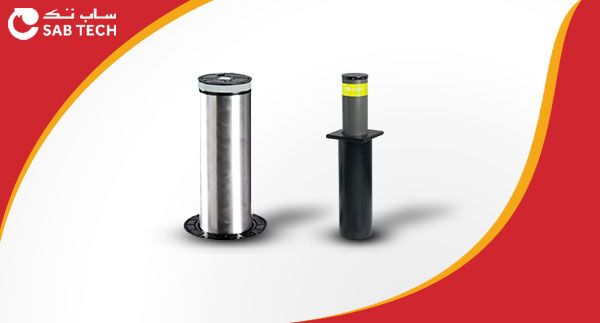Bollard Maintenance: Promoting Safety and Reliability

When you consider today’s modern road and public security infrastructure, probably the most common and pervasive feature that you will come across is the humble bollard. You can see them lining pavements, segregating sections of roads, or planted in front of malls, commercial buildings, and other such establishments. In fact, they are so common, that we rarely give them a second glance. However, it should be known that bollards are not there to act as decorative pieces. Yes, they do serve that purpose as well, but their primary function is to act as effective barriers and access control systems against attacks by vehicles driven by miscreants or terrorists at sensitive locations or even on pedestrians.
There are many different types of bollards such as fixed bollards, removable bollards, and automatic bollards. They can be simple concrete or metal posts fixed permanently to the road surface or they can be sophisticated retractable devices with in-built LED lighting running on hydraulic power and operated by an electronic remote-control mechanism. Irrespective of the different types of bollards available, all bollards require periodic maintenance.
Importance of Bollard Maintenance
Maintenance of bollards is a crucial necessity, which ensures that they can always function optimally. But why is it so important that they do so? Bollards are silent sentinels, unobtrusively working round-the-clock to ensure the safety and security of the premises that they are guarding or making sure that pedestrians are safe from vehicle attacks. One cannot compromise on such important functions. A malfunctioning or damaged bollard makes the entire security system vulnerable, which may lead to deadly attacks that can result in loss of human lives or extensive damage to property.
How are bollards damaged?
Bollards are specifically designed to withstand tremendous impact from large, heavy vehicles travelling at high speeds. A high-security hydraulic road bollard, like the one manufactured by SABTECH, can guard various industrial, commercial, and government establishments. It carries impressive crash ratings such as PAS 68 and IWA 14, and there is not much that can damage it. Still, bollards are susceptible to various kinds of damage, as shown below:
- Impact with vehicles: Bollards can effectively do their jobs of preventing vehicular attacks or accidents, but they do not escape unscathed. Post-impact damage such as scratches, dents, or cracks are common occurrences and can severely diminish the ability of the bollard to function properly.
- Intentional damage: Vandalism is one of the leading causes of damage of bollards. Remember that bollards are also useful for their aesthetic appeal. So, while the structure itself may not be damaged, it can be defaced by vandals, which can look ugly and out-of-place in well-maintained and well-decorated spaces.
- Environmental damage: Bollards are vulnerable to damage from weather and other environmental factors and go through a natural process of wear and tear. The presence of moisture or salinity in the air can degrade the bollard’s structure over time and corrode its machinery.
- Incorrect maintenance procedure: Sometimes, not following correct or proper maintenance procedures can result in exacerbation of the existing damage in the bollard or even result in new ones.
How to Keep Your Bollards Working
We have established that bollards are hardy pieces of equipment that require relatively less maintenance. However, with a regular maintenance schedule, their lives can be greatly extended and they can continue to give excellent service for years. Let us see how bollards can be kept in top condition.
On average, bollards should be checked every six months for signs of damage, or wear and tear. A careful visual inspection can reveal any scratches, chips, cracks, or dents. Once such damage has been identified it should be repaired or replaced immediately. They should also be checked to see if their foundation is intact. Loose or unevenly installed bollards should be fixed properly to the surface of roads.
For maintenance of hydraulic road bollards, a more detailed examination is required. Maintenance personnel should look for loose wiring, damage to the functioning of the hydraulic system, and the electronic remote operation system. Any faults that show up should be repaired immediately and malfunctioning parts, if any, should be replaced. The hydraulic road bollards should be cleaned thoroughly to prevent build up of dust and debris, which can hamper the smooth operation of retractable bollards.
The maintenance crew should follow established procedures to check and repair bollards. They should make sure that only the prescribed cleaning agents for metal and concrete bollards should be used to prevent corrosion or any other damage that can compromise the integrity of the structure. Further, only original, branded spare parts should be used to replace damaged or worn-out components.
Choosing the Right Solution: Why SABTECH’s Bollard Maintenance
When you buy bollards from the best security road bollard supplier in Saudi Arabia, it makes sense to get them serviced by the best bollard maintenance service provider too! With their extensive knowledge and experience of designing high-quality hydraulic systems, leading road bollard manufacturers in Saudia Arabia, SABTECH is the partner of choice for the purchase and maintenance of your hydraulic bollard security system. Their annual maintenance contract ensures regular on-site maintenance of your hydraulic bollards including replacement of worn-out or damaged components with original, branded spare parts.
With SABTECH, you will get professional, cost-effective repair and maintenance services that will ensure that your security system is working perfectly, giving you complete peace of mind for years to come. Their maintenance experts can diagnose your problems and suggest the most effective solutions. Their service centers are located extensively throughout Saudi Arabia, resulting in faster response times and quicker resolution of performance issues.